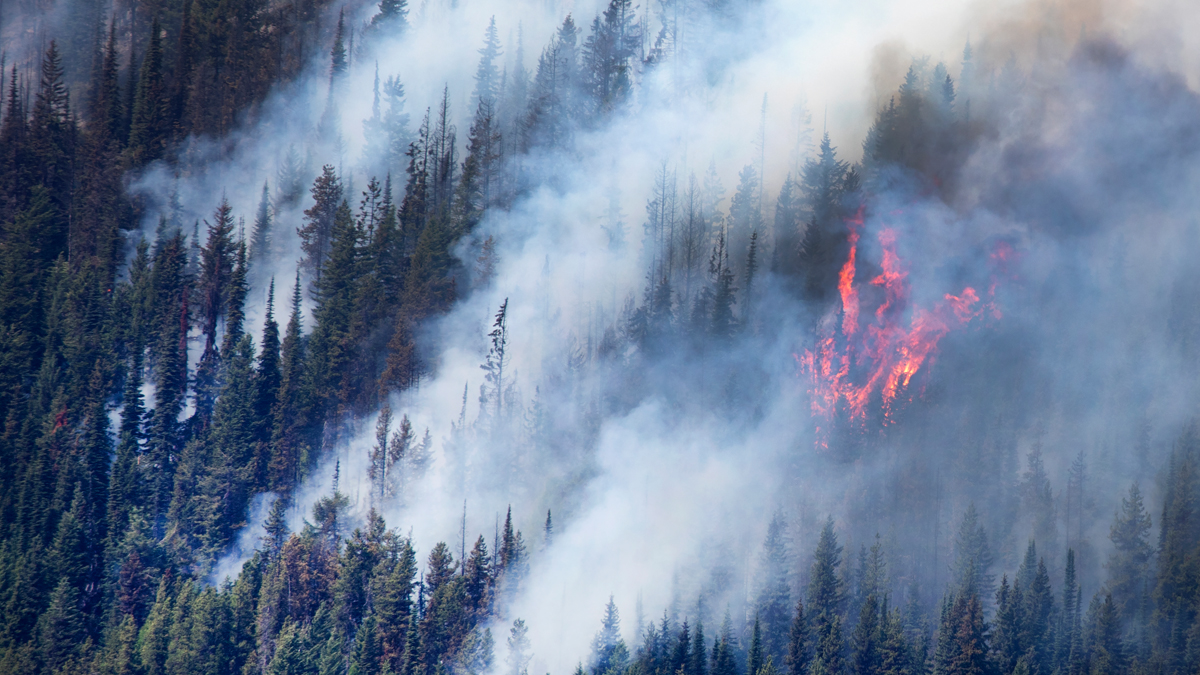Wildfires: Unraveling the Aftermath of Destruction
While considered a natural part of the Earth’s ecological cycle, wildfires have become an increasingly concerning environmental issue in recent years. These intense and destructive infernos – fueled by a combination of climate change; human negligence, including discarded cigarettes and unattended campfires; equipment failures; natural occurrences such as lighting strikes; and various other factors – leave a lasting mark on the planet’s delicate ecosystems. The environmental impact of wildfires is far-reaching and demands urgent attention from communities, policymakers, and global leaders.
It also creates a real need for environmental testing – before conflagrations and in their aftermath. Smoke is made up of pernicious particulate matter and volatile and semivolatile compounds that affect human health in various ways. Emissions from wildfires can affect snowmelt and storm runoff, causing untold damage. Mudslides can dump ash and toxicants into our communities. Drinking water can be contaminated by chemicals and heavy metals. And on and on. The short- and long-term damage caused by these substances – and how best to mitigate that damage – can only be determined through rigorous and thorough testing.
Here’s just a sampling of what’s at stake – and where testing can make a big difference.
Loss of Biodiversity
One of the most significant environmental effects of wildfires is the loss of biodiversity. Wildfires can lead to the destruction of vast habitats, displacing and endangering numerous plant and animal species. While some species may have evolved to adapt to wildfires, many others are unable to survive the sudden and intense blaze. This disruption in the natural balance can result in reduced genetic diversity, making ecosystems more vulnerable to invasive species and other disturbances.
Soil Degradation
When wildfires sweep through an area, the intense heat can lead to the incineration of organic matter in the soil. This can result in the loss of essential nutrients and microorganisms necessary for healthy plant growth. The exposed soil becomes more susceptible to erosion, leading to increased sediment runoff into nearby water bodies. Soil degradation not only affects local vegetation recovery but can also impact agricultural productivity and water quality in the region.
Air Quality
Wildfires release vast amounts of smoke, particulate matter, and harmful gases into the atmosphere. These emissions can travel over vast distances, leading to degraded air quality in areas far from the actual fire site. Prolonged exposure to wildfire smoke can have severe health implications, particularly for vulnerable populations such as children, the elderly, and those with respiratory conditions. And the release of greenhouse gases like carbon dioxide and methane during wildfires contributes to climate change, exacerbating the problem further.
Water Contamination
Wildfires can alter the hydrological cycle in a region, impacting water quality and availability. The loss of vegetation and the degradation of soil can lead to increased runoff during heavy rains, causing soil and ash to be washed into rivers and streams. This results in water contamination and can disrupt aquatic ecosystems, affecting fish populations and other water-borne life. Plus, the increased sedimentation can clog waterways, compounding the risk of floods.
Climate Change Feedback Loop
Wildfires contribute to climate change by releasing greenhouse gases into the atmosphere. But they can also create a feedback loop that increases their own intensity and frequency. As global temperatures rise, fire-prone conditions become more prevalent, leading to an increase in the frequency and severity of wildfires. This feedback loop creates a vicious cycle that can be challenging to break without concerted efforts to reduce greenhouse gas emissions.
The environmental effects of wildfires are profound and multifaceted, posing significant challenges to our ecosystems, biodiversity, air quality, water resources, and climate. As the frequency and intensity of wildfires continue to rise, it’s imperative for governments, communities, and individuals to take proactive measures to mitigate the impacts. These actions include better land management practices, investing in fire-resistant infrastructure, promoting sustainable living, and implementing policies to combat climate change. Only through collective efforts can we hope to safeguard our planet’s precious ecosystems and ensure a sustainable future for generations to come.
To learn more about the environmental effects of wildfires, download our infographic:
